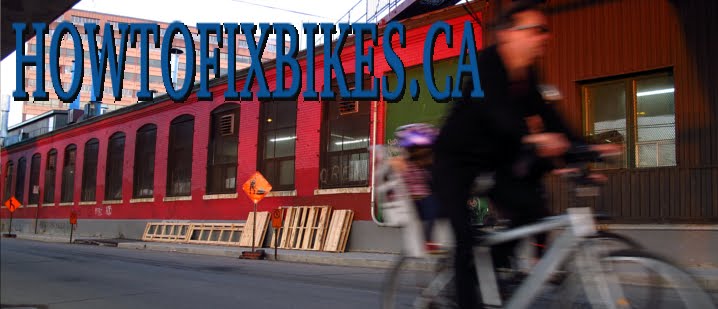
After the initial long ride with the Raleigh, I realized two things. My legs were definitely not used to riding a regular diamond frame anymore and I really liked the way it rode, but it was missing something. This bike was definitely not right for the upright cruiser position. Maybe it's the skinny tires (For me those are skinny, but I know some dudes who find those tires huge!) or the frame geometry, I don't know, but something was just not feeling right.
I hang out with a bunch that ride fixies and I must admit that I love how vintage road steel comes alive again with modern wheels, components and how attractive the purest form of the bike is. One thing that I find very cool is how they use flipped and cut drop bars. I found a pair of alloy drop bars and by using a pipe cutter tool, I trimmed off the excess. I then covered them with fake cork grip tape.

I was a bit worried. One of the reasons I had stopped riding diamond frames was because my hands would get numb quite fast. But so far the combination of the grip tape and gloves seem to work. I did splurge for the grip tape since I wanted a vintage look, $22CDN. What the heck, you only live once last time I checked.
I disconnected the Nexus hub since it didn't need the gears and I am replacing that wheel with a single speed coaster hub soon anyways. The ride is sublime, a bit nimble and that Brooks saddle is still as plush as ever.
 So, what is this bike? A wannabe fixie? A violated vintage roadster? A piece of junk? I don't really care what people will think, I'm in love with this bike like you wouldn't believe. What caught my eye the first time I saw it was that dimpled fork. I have loved those forks since I was 10, I had a Raleigh Chopper. The fact that the saddle was also original equipement, that crane chain ring, the racing green, the faded hand painted gold pinstripes, all are factors that makes me able to sit and just look at it for a long time. It not only looks great, it rides great. I am very happy with the fact that I was able to keep the most important (for me) original parts, add some modern rubber and bring it down as close as I could to it's most purest form.
So, what is this bike? A wannabe fixie? A violated vintage roadster? A piece of junk? I don't really care what people will think, I'm in love with this bike like you wouldn't believe. What caught my eye the first time I saw it was that dimpled fork. I have loved those forks since I was 10, I had a Raleigh Chopper. The fact that the saddle was also original equipement, that crane chain ring, the racing green, the faded hand painted gold pinstripes, all are factors that makes me able to sit and just look at it for a long time. It not only looks great, it rides great. I am very happy with the fact that I was able to keep the most important (for me) original parts, add some modern rubber and bring it down as close as I could to it's most purest form.As of today, it sleeps indoors. I hope you enjoyed this build, the spend-o-meter has stopped at $48 CDN.
Until next time, ride safe and Godspeed.
Gerry :)
























